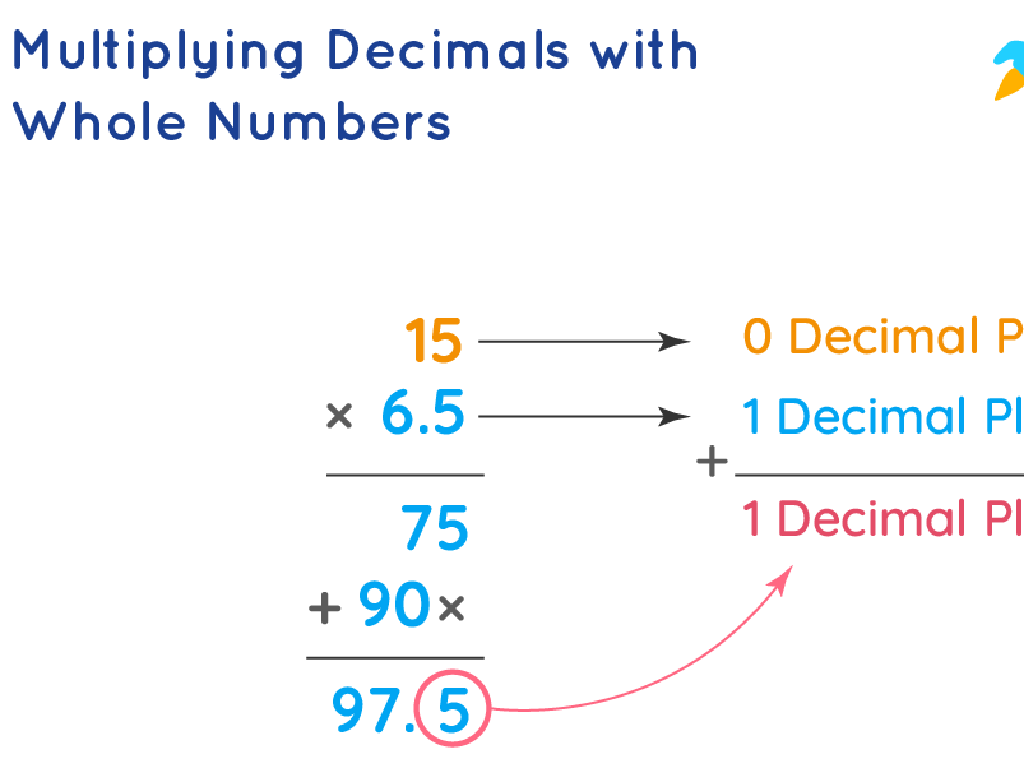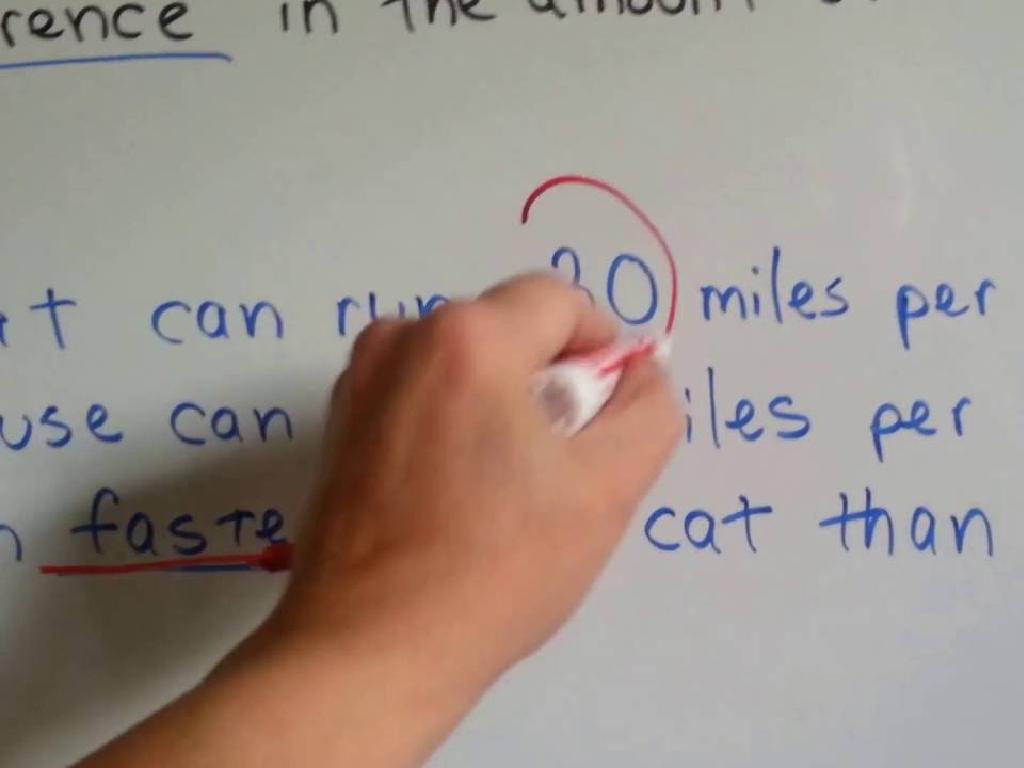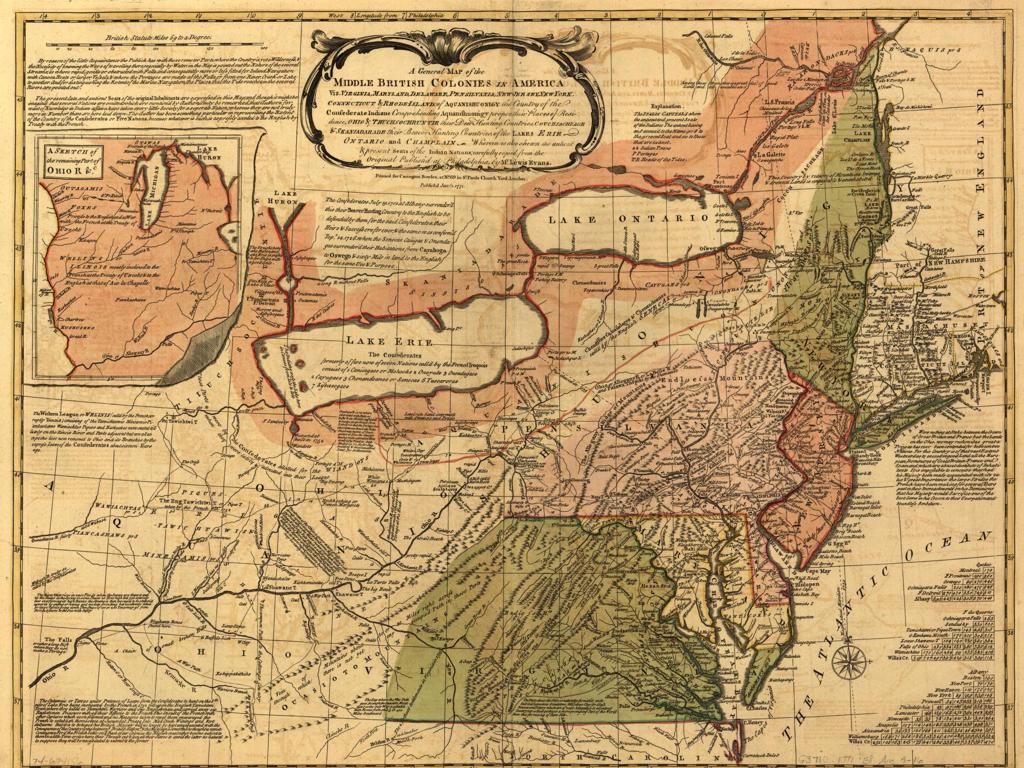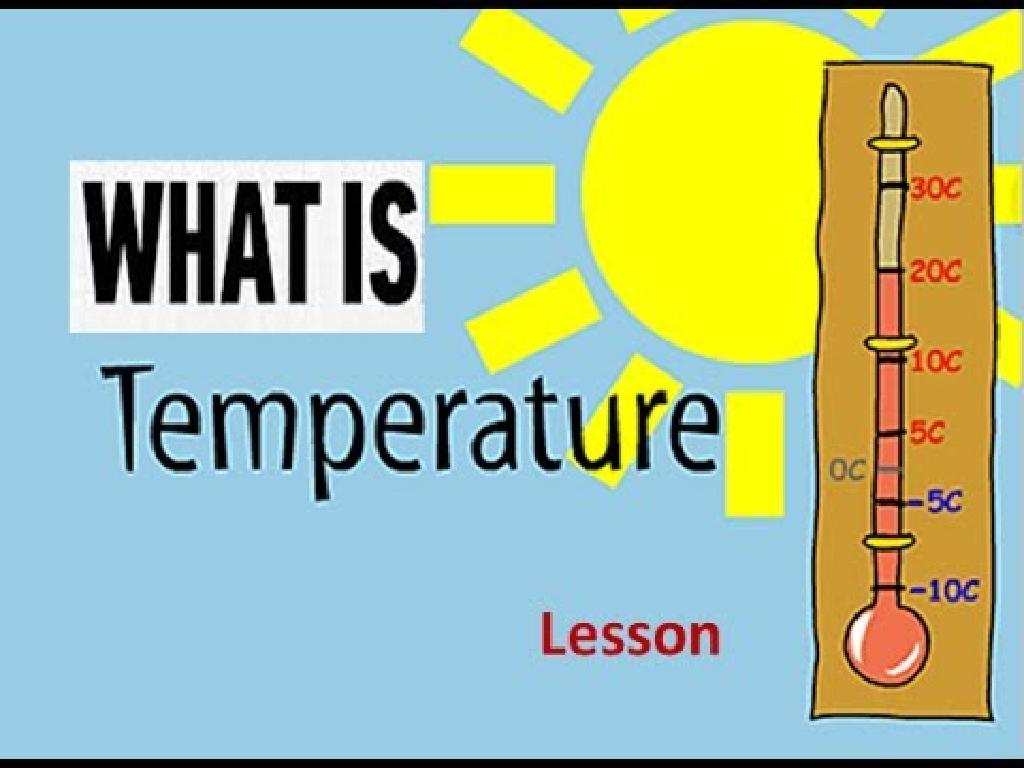Make Teen Numbers: Words
Subject: Math
Grade: Kindergarten
Topic: Count Tens And Ones - Up To 20
Please LOG IN to download the presentation. Access is available to registered users only.
View More Content
Welcome to Teen Numbers!
– Learning about teen numbers
– Teen numbers range
– Numbers from 11 to 19
– Teen numbers are special
– They start with ‘1’ and have a unique name
– Practice with teen numbers
– We’ll write and say these numbers together
|
This slide introduces kindergarteners to the concept of teen numbers, which are the numbers from 11 to 19. These numbers are the first step beyond the basic one-digit numbers and are unique because they all start with the digit ‘1’ and have distinct names that don’t follow the ‘twenty, thirty, forty’ pattern of later numbers. It’s important to emphasize the pattern that all teen numbers follow, with ‘1’ representing ten and the second digit representing ones. Use visual aids like number cards or blocks to help students recognize and become familiar with these numbers. Encourage the children to practice writing and saying the numbers out loud to reinforce their learning. Plan interactive activities where students can match objects to teen numbers to solidify their understanding.
Counting to 20: Teen Numbers
– Count together from 1 to 20
– Numbers 11 to 19 are unique
– Eleven to nineteen have a different sound
– Teen numbers are special
– Teen numbers end with ‘teen’
– Practice saying teen numbers
– Repeat teen numbers to learn them well
|
This slide is aimed at helping Kindergarten students recognize and practice counting to 20, with a focus on understanding the uniqueness of teen numbers (11-19). Start the lesson by counting together with the class from 1 to 20, emphasizing the pronunciation of each number. Highlight how numbers 11 to 19 sound different from the rest, pointing out that they all end with ‘teen’ and are therefore called teen numbers. Engage the students in repeating the teen numbers several times to help them memorize the sequence. Encourage them to listen and repeat after you, and to practice at home as well. This exercise will build a strong foundation for their understanding of number sequences and the base-ten system.
What Makes a Teen Number?
– Teen numbers start with 1
– The 1 in teen numbers means 10
– Add ones to ten
– We add 1, 2, 3… to 10
– Example with number 11
– 10 plus 1 more makes 11
– Practice makes perfect
|
This slide introduces the concept of teen numbers to Kindergarten students. Begin by explaining that all teen numbers begin with the digit 1, which represents ’10’. Then, to form teen numbers, we add more units (ones) to the base of 10. Use number 11 as an example to show that adding 1 to 10 gives us 11. Encourage the students to practice with other teen numbers, using physical objects like blocks or counters to visualize the concept. Reinforce the idea that the second digit in a teen number tells us how many ones we add to 10. This hands-on activity will help solidify their understanding of teen numbers.
Learning Teen Numbers: Words
– Teen numbers are special
– Names: Eleven to Nineteen
– After ten, we have eleven, twelve, then thirteen up to nineteen
– Practice saying them aloud
– We’ll say the numbers together as a class activity
– Recognize teen number words
– Match spoken words to written numbers
|
This slide introduces the concept of teen numbers to Kindergarten students, emphasizing the unique names of numbers from eleven to nineteen. Start by explaining that numbers after ten have their own special names, which they will learn. Display the words for eleven through nineteen and encourage the students to repeat after you, helping them to pronounce each number correctly. Engage the class in a fun activity where they say the numbers in unison. Reinforce learning by showing the written words and having students match them to spoken words. This will help students to both recognize and remember the teen number words. Use visual aids like number cards to support the learning process.
Matching Numbers with Words
– Match number 13 to ‘Thirteen’
– Connect 15 to ‘Fifteen’
– Pair up numbers with words
– Use cards to match digits to words
– Practice with all teen numbers
– Helps recognize numbers and their names
|
This slide is aimed at helping Kindergarten students learn to match teen numbers with their corresponding word forms. Start by showing them the number 13 and the word ‘Thirteen’ and guide them to see that they are the same. Do the same with 15 and ‘Fifteen’. Then, encourage the students to work together to match all the teen numbers with their word forms. This can be done through a fun matching game with cards that have numbers on one set and words on the other. This activity will help students to not only recognize the numbers but also to understand that each number is associated with a unique word that represents it. It’s a foundational skill in developing number sense and literacy in mathematics.
Making Teen Numbers with Fingers!
– Start with 10 fingers
– Add more fingers for teens
– Adding 3 to 10 makes 13
– Show 10 fingers, then add 3 more. Now we have 13!
– Practice with different numbers
– Try adding 4, 5, or more and see what teen numbers we get!
|
This slide is designed to help Kindergarten students understand the concept of teen numbers by using their fingers as visual and tactile aids. Start by having the students show their 10 fingers, which represents the number 10. Then, ask them to add more fingers to reach teen numbers. For example, adding 3 more fingers to the 10 they already have will result in the number 13. Reinforce the concept by saying the numbers out loud and having the students repeat them. Encourage the students to practice with different numbers, adding 1 to 9 more fingers to their base of 10, to create the rest of the teen numbers. This hands-on activity will help solidify their understanding of counting and forming teen numbers.
Teen Number Song
– Sing the Teen Number Song
– Helps with number memory
– Songs make remembering numbers fun and easy
– Engage with singing and actions
– Use hand movements to represent each number
– Fun way to learn teen numbers
|
This slide introduces the Teen Number Song, an engaging and interactive way for Kindergarten students to learn and memorize teen numbers. The song incorporates both auditory and kinesthetic learning styles, which helps in reinforcing the numbers in the students’ memory. Encourage the children to sing along and perform the actions associated with each number. This activity not only makes learning fun but also aids in the development of fine motor skills. As a teacher, you can demonstrate the actions first and then invite the students to join in. Make sure to praise their efforts to build confidence and enthusiasm.
Class Activity: Teen Number Bingo
– Let’s play Teen Number Bingo!
– Cover the number when you hear it
– If I say ‘fourteen’, find it and cover it
– First to cover all wins a prize
– Keep listening and covering numbers
– Have fun learning teen numbers!
|
This activity is designed to help Kindergarten students recognize and learn teen numbers in a fun and interactive way. Prepare bingo cards with teen numbers (13-19) in random order. Explain the rules clearly, demonstrating how to cover a number. Use beans, buttons, or any small items as markers. As you call out numbers, encourage the children to find and cover the corresponding number on their bingo cards. Monitor the class to ensure they are engaged and correctly identifying the numbers. Celebrate the winners and encourage the others to keep practicing. Possible variations of the game could include: using different items as markers, playing in small groups, or calling out numbers in a different language for dual-language learners.






